Content Marketing Trends From Robert Rose | Webinar Recap

Today, content marketers and creators have two key objectives: get their content noticed and drive growth for their business. Content data is central to both, as content must resonate with customers, attract the right audiences, and drive bottom-line business results.
WordPress VIP and Parse.ly VP of Marketing Dave Cardiel recently joined The Content Advisory Founder and Chief Troublemaker Robert Rose for a webinar led by BRAND United President Chris Lyons to discuss those objectives.
Robert shared his expertise on how to effectively use content analytics to drive growth, improve content creation, and optimize digital experiences. He also weighed in on the results of our Content Matters 2022 Report, which polled more than 800 content marketers to better understand the challenges they’re facing today.
Here are highlights, musings, and takeaways from Robert’s presentation:
- What is our biggest challenge with content?
- How can we scale results and drive profitability while investing more in content?
- What is the type of content most people want to do more of?
- How can we do more with less?
- How do we get buy-in for this process of planning and prioritization in content strategy?
What is our biggest challenge with content?
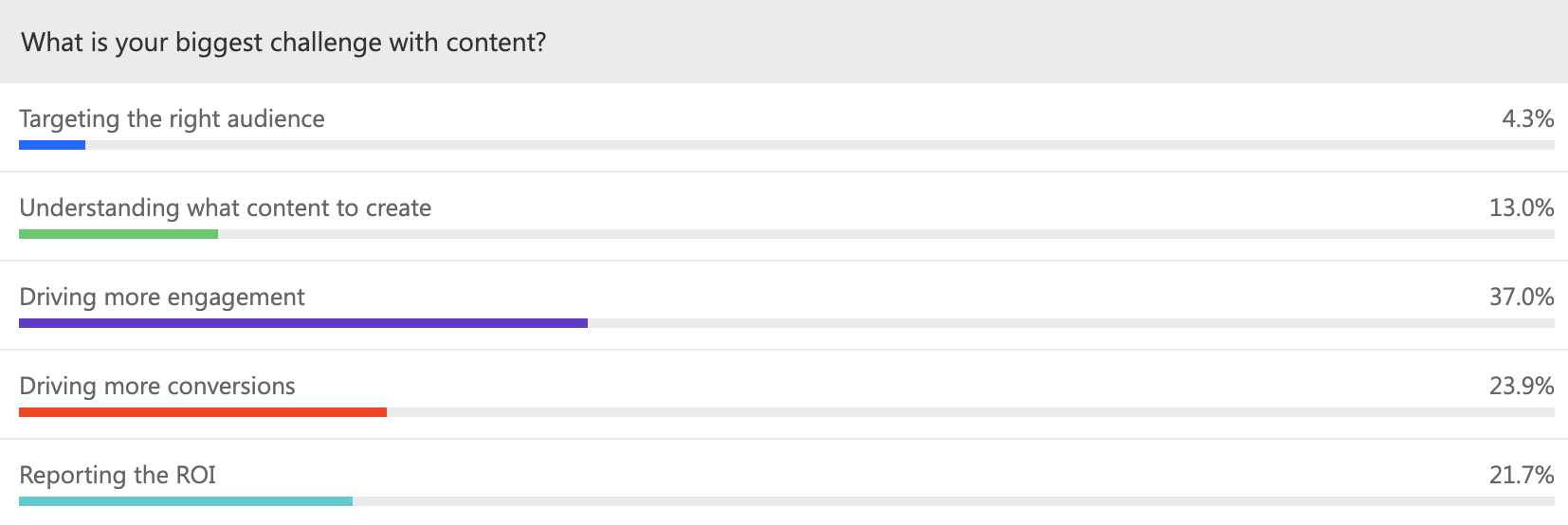
5/5/2022 webinar audience poll
It’s interesting that the biggest challenge people face with content is “driving more engagement.” If we peel back that response, we find that the challenge really is about understanding what content needs to get created to drive more engagement, a chicken and egg situation.
“Driving more conversions” is the number one challenge that we see right now at The Content Advisory. Conversions is a broad topic—a “conversion” can mean everything from “buy now” to “sign up” to “attend this webinar,” but it comes down to users taking action off content. So many content practitioners and marketers are trying to figure out how to create content that gets people to take action because that is how they can attribute real business value to what they’re doing.
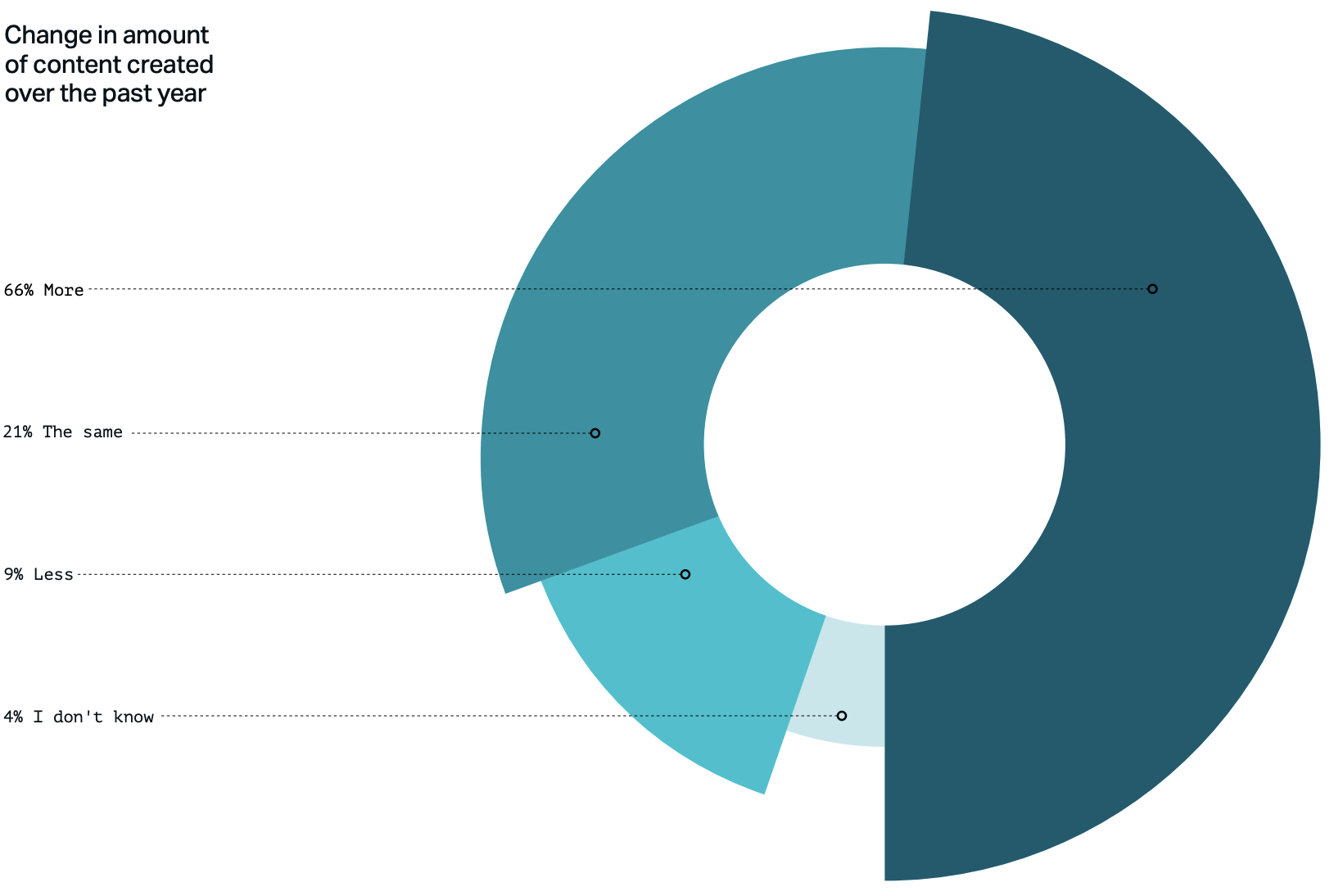
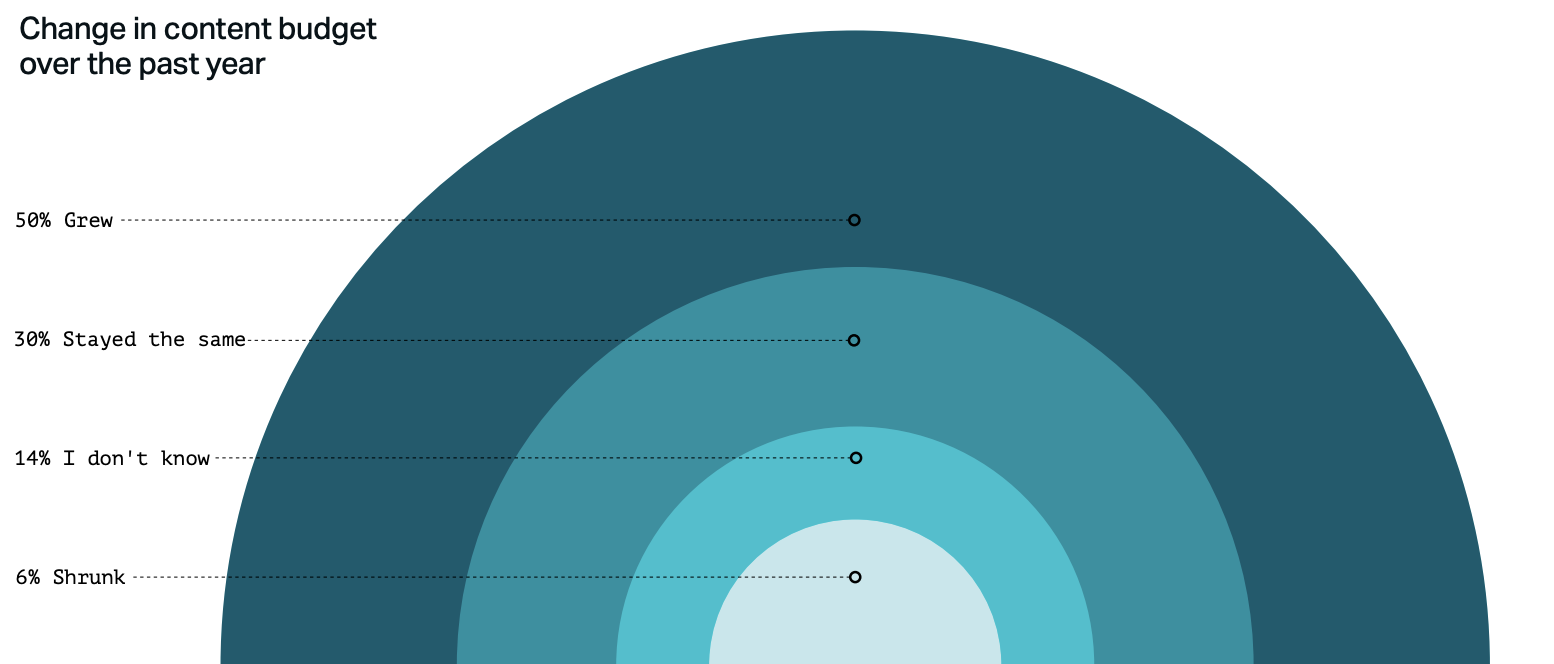
Source: Content Matters 2022 Report, WordPress VIP/Parse.ly
Content marketing is growing fast. This is something we’re also seeing at The Content Marketing Institute (CMI) and in our research every year, but it’s a double-edged sword. The immediate gut reaction for us is to say, “Great… we’re investing more in content marketing,” and “OK… we have to create more content.” But in many cases, though we are creating more content, we’re not always seeing increased results with that increased production.
How can we scale results and drive profitability while investing more in content?
Increased production and investment in content marketing is fabulous, but what’s the other side of that coin?
So many teams these days are simply overwhelmed. They’ve been positioned as the internal “content vending machine” for their company, and all they feel like they’re doing is churning out more and more. We’re at a point now where many teams are hitting the ceiling in a hard way.

Source: Content Matters 2022 Report, WordPress VIP/Parse.ly
It’s amazing when we start thinking about “more” in terms of content distribution channels. We see channels like “website,” “blog,” “email,” and “social media” at the top, and these are all typically looked at as content machines. If you have a newsletter, you’ve got to feed it every week. If you have a social media channel, you need to feed it every day, and so on.
Tension arises when we see something work, whether it’s through email, social media, or blog, and we say, “Give us more of that.” At that point, we start churning out more and more until the point where we see a declining set of returns.
We see teams taking a step back and getting strategic about what they’re doing across different distribution channels, focusing and prioritizing their content marketing purpose. Instead of flooding the zone with content, they’re realizing they need to actually reduce the amount of content they’re producing on any one of those channels to reach their goals.
Everyone’s trying to use virtually every distribution channel to achieve virtually every goal. We’re at a point where we’re throwing all the spaghetti against the wall. We don’t even care how much if it sticks.
The key is figuring out how to take a breath as a team, as a company, and decide what’s important and what’s moving the needle. That’s where content analytics comes in.
We need to identify the priorities behind our purpose. If we don’t, we can’t measure what is actually helping us progress toward specific goals. Measurement becomes meaningless without prioritized purpose, because it’s easy to find whatever vanity metric matches whatever purpose you need on any given day.
What is the type of content most people want to do more of?
In my experience, people want to do more of the highest level of branded content or content marketing. Marketers want to develop content that is cool, interesting, educational, inspirational, funny, and valuable, for the very reason that you might expect.
It’s more interesting to work on content that delivers value in and of itself, rather than A/B testing some new conversion-oriented headline that might drive four more conversions. Unfortunately, the business priority may be in direct opposition to that motive.
From the business perspective, there’s a mismatch between creating awareness, driving purchases, promoting product usage, and fostering loyalty. Right now, if you ask the individual silos within an organization—marketing, sales, C-Suite, customer service, etc.—“What should we be doing?” you’ll get any number of different answers. The real challenge is collaboration and prioritization, which is where analytics play such a huge role.
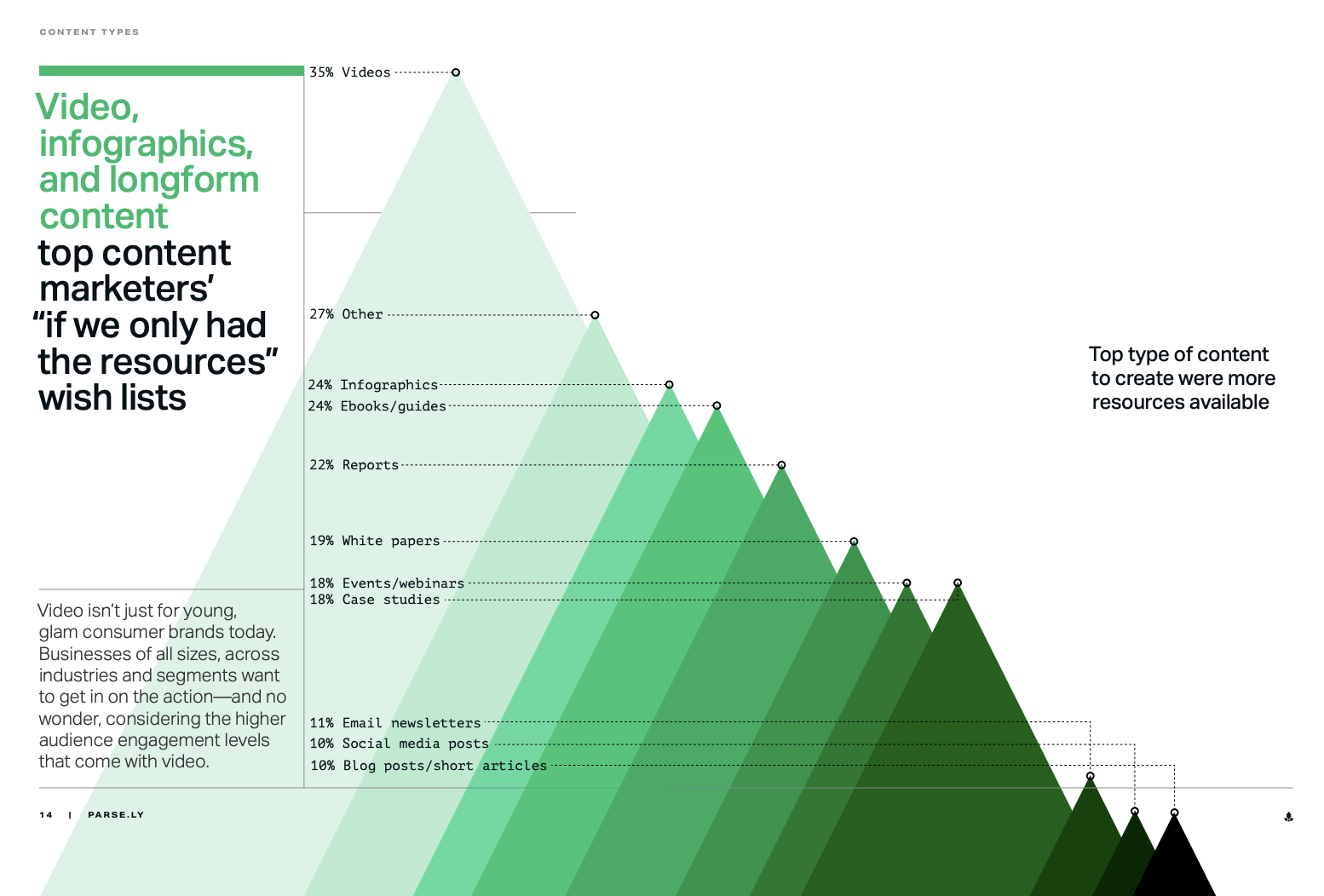
Source: Content Matters 2022 Report, WordPress VIP/Parse.ly
In terms of content formats, video is the golden child right now. A lot of the desire to create more video has grown out of the events of the past two years, especially on the B2B side. With the pandemic and rise of remote work, so much sales enablement is now happening over video.
The initial hesitation was that this strategy wouldn’t be as effective as getting in front of prospects at the conference room table and giving a presentation. But sales organizations have found that it actually works better, and many of them are not going back to their old ways even after lockdown.
Video drives an oversized level of intimate engagement. It’s no surprise that now we’re seeing so many brands develop robust in-house video production teams.
But “doing video” doesn’t mean just recording a zoom call, throwing your logo on it, and putting it on YouTube. That’s not a video strategy. We need to think about reuse, repackaging, and how we’re going to allow people to consume content in different ways. So, if you’re making a video, take the transcript and put it out as a blog post, or do an audio version as a podcast. Accommodate your audience based on how they want to consume your content, but also optimize it for the particular content type.
How can we do more with less?
First of all, welcome to marketing! There’s not a marketer alive who hasn’t been asked that question by their boss. It comes up so frequently for content teams because content marketing has grown organically in most businesses, instead of starting with a foundational strategy.
The typical evolution has been understanding the need for more content, building a content factory, and producing more and more content. That’s when we start to ask ourselves, “How can we do more with less?” The answer goes all the way back to the planning and prioritization process, which many organizations rush through or skip entirely.
As marketers, we tend to believe that we’ll move faster if we go right from idea to production. But instead, we have to slow down—start with an idea, plan, and prioritize all the iterations of that particular idea, and then start production.
I’ve seen amazingly wonderful, brand-level ideas get trapped in the context of a blog post, simply because that was the way the idea was first thought of. We need to take those ideas and put in a process step to figure out all of the containers that they might go into before we move into production.
Slow the creation of ideas to exponentially speed the amount of assets that you can create through reuse and repackaging. That’s how you do more with less.
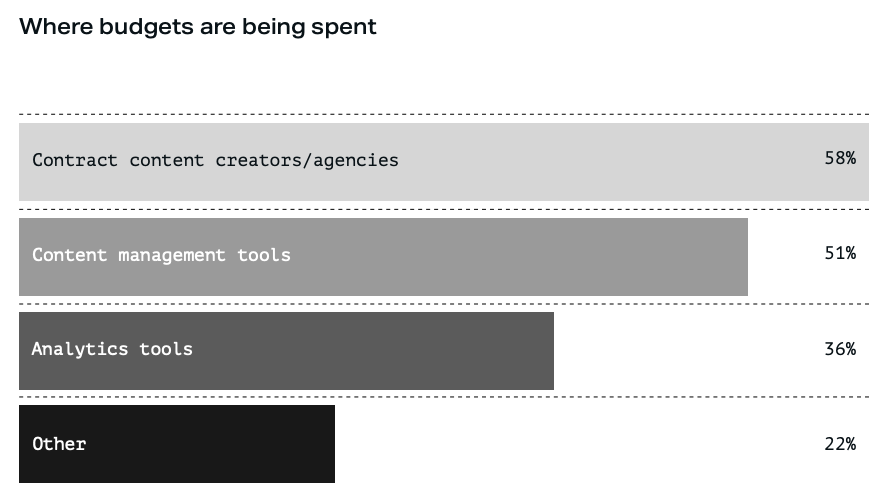
Source: Content Matters 2022 Report, WordPress VIP/Parse.ly
Budgets are mainly being spent on contract content creators and agencies, which is the direct result of a lack of planning and prioritization. Companies have more ideas for content than they can handle creating in-house, so they hire content creators and agencies to do the work.
To work more efficiently, we need to remember that ideas don’t cost money; what costs money is taking those ideas, putting them into production, and creating assets that can be consumed. So, how can we be smarter about which ideas we actually follow through with and spend less time and resources on volume content operations?
The answer: better analytics tools. Content analytics help us understand what’s working and what’s not, and give us insight into how to create fewer, better ideas.
Instead of contracting out every idea we come up with, we need to prioritize and plan—identifying the great ideas and how to iterate on them, identifying the bad ideas and scratching them off the list. To do that, the spend on analytics tools needs to come way up. We should be spending money to understand what we should be creating and why, rather than spending money to execute half-baked, low-impact ideas.

How do we get buy-in for this process of planning and prioritization in content strategy?
The first thing we have to understand is all the content operations going on. Ask most CMOs, CEOs, and CFOs about content, and they’ll say, “I don’t know, it’s a black box. Ideas go in and content comes out.” We need to be Air Traffic Control for all things going on around content at our organization, and communicate that up to the C-Suite. For all of the assets, requests, and ideas, we need visibility into how much everything costs, how much time and resources go into production, and how everything performs over time. In other words, we need content analytics.
Once we pinpoint inefficiencies in our process and identify where we can improve, then we can start talking about our content operations in terms of profitability. If we can produce more effective content or produce content more efficiently, now that we have analytics tools in place to measure its performance, we’re going to be more profitable. The real way to get buy-in from executives is by having them make a business decision. If you’re asking for more profitability, they’d be silly to say “no.”
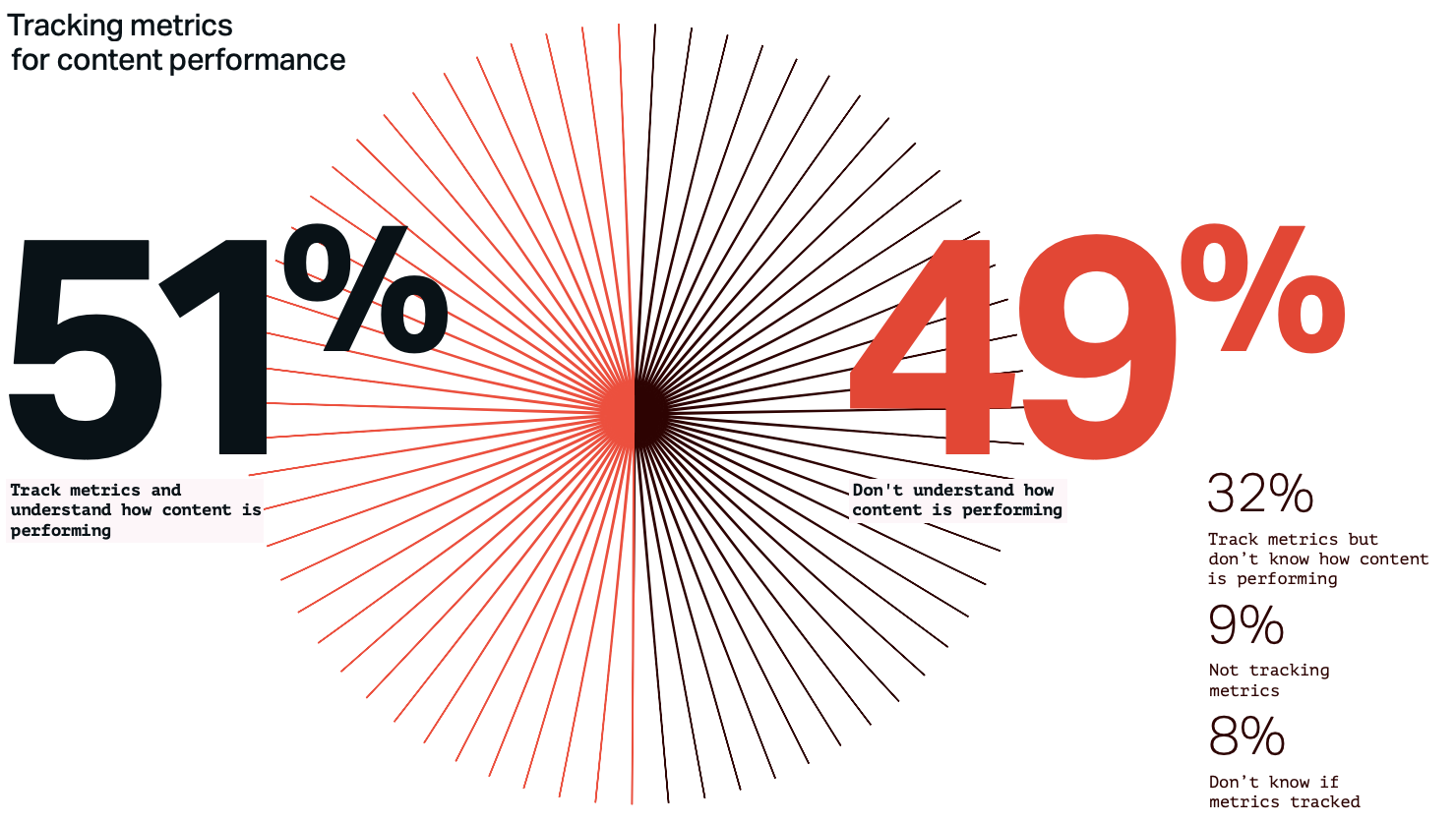
Source: Content Matters 2022 Report, WordPress VIP/Parse.ly
The numbers here show that we aren’t doing a good job as Air Traffic Control and don’t have a handle on all things going on around content at our organization. One of the biggest reasons for that comes back to the idea of content production as a factory.
Most of the time, what content teams are doing is taking the content we’re creating and giving it to someone else as an asset to distribute and promote. But those two processes are separate, completely disjointed from one another.
Many times I’ve heard a content marketer say to me, “We produced this amazing whitepaper, and then the demand generation people didn’t put any money behind it, didn’t promote it well, and it performed poorly.” Instead of criticizing the mediocre promotional strategy, the quality of the whitepaper is blamed for the poor campaign performance.
That’s often because we’re not measuring the right things. We need to get visibility into all factors of campaign performance so we can figure out how to connect the right promotion with the right message.
Not all content should have the same level of objectives and promotion. Some pieces deserve more involved promotion strategies, and others don’t. Being able to measure your promotional efforts, syndication, and distribution strategies is the core element of understanding what you should be creating in the first place.
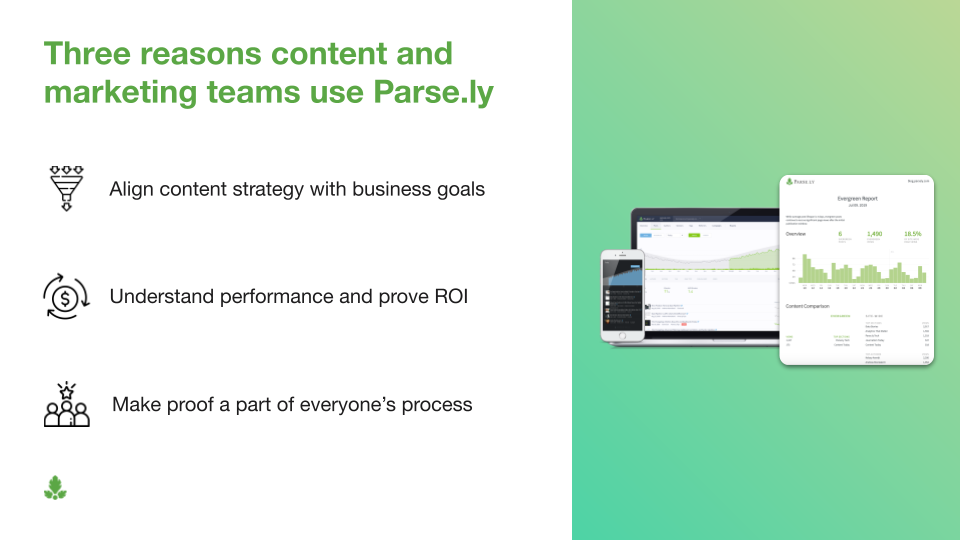
Content is still a fairly immature discipline in terms of the analytical piece of it. With the amount of content we create and the amount of money we spend on content, we lack an understanding of how much return we’re getting on that investment.
Sales. Marketing. Demand generation. Brand. PR. Comms. Legal. Everyone creates content that communicates with customers. But most organizations don’t have their arms wrapped around managing and measuring the results of all that in a mature way.
For content marketers today, data is king. Though we find that a lot of people are measuring content performance with analytics, many are still not able to improve it. They’re tracking vanity metrics and high-level transactions, but lack meaningful analytics that show how their efforts are affecting their overall goals and objectives.
Want to learn more about how content teams are bridging this gap with easy-to-use, meaningful content analytics from Parse.ly?